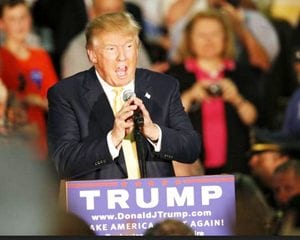

All eyes were on the markets as Americans flocked to polls this week. Many speculators and traders were watching bitcoin closely as the results rolled in with a heightened indication that Donald Trump, whom most political pundits had predicted losing, looked set to cause an electoral upset.
Bitcoin became the currency to watch in the aftermath of this year’s earlier global shakeup: Britain’s Brexit vote. By the time the final vote was in, Bitcoin had climbed from trading at $650 to an unprecedented high of $750. Traders were expected to see similar movements in the event of a Trump win this November, but it became apparent that the two scenarios were not entirely analogous.
The first factor is that the Brexit vote occurred at the same time as a change to bitcoin’s reward scheme; which affected trading. The second is that bitcoin’s trade patterns before each vote differ. Blockchain, the wallet provider, has released data indicating that in the run-up to Britain’s referendum, the USD reached an annual high in exchange volume which resulted in the subsequent trade price crest. Meanwhile, the run-up to the US election saw subdued markets and more cautious USD trading.
This isn’t to say that bitcoin didn’t rise at all in the uncertainty; the 24 hours around the US elections saw it go from $709 to nearly $740, eventually dropping again to $725. The Trump win had provided a boost, but it paled in comparison to the Brexit spike.

Proponents cite rises like these as evidence that Bitcoin is uncorrelated. Mark Lamb, the CEO of Coinfloor, certainly feels that way, although he concedes that it remains uncertain exactly how Bitcoin should be classified. In the middle ground are the likes of Needham & Company’s Spencer Bogart, who projected a high of $848 for bitcoin this year, saying that it’s behaving in the markets as though it is a haven asset, though firm grounds for it have yet to be established.
More conservative analysts like Gil Luria of Wedbush Securities are not so quick to believe, however. He is skeptical that Bitcoin trades in either opposing or counter-cyclical fashion to other assets, and maintains that there is a lack of evidence to prove that it does.
Without that assurance, he was hesitant to accept the proposed status. He also cited bitcoin’s technological risks as a strike against its ability to attain haven status. Oin, its price is 67% up from the $434 Despite the uncertainty about classifying pitch-mark set in January and traders remain optimistic about its growth into the new year.